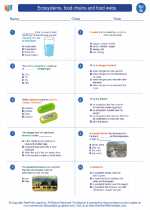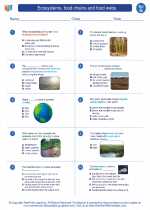Reproductive System
The reproductive system is a collection of internal and external organs that work together to produce offspring. It is essential for the continuation of a species. The primary function of the reproductive system is to produce sex cells, or gametes, and ensure the growth and development of offspring.
Male Reproductive System
The male reproductive system consists of several organs, including the testes, vas deferens, prostate gland, and penis. The testes are responsible for producing sperm, while the penis delivers sperm to the female reproductive system during sexual intercourse.
Female Reproductive System
The female reproductive system includes the ovaries, fallopian tubes, uterus, and vagina. The ovaries produce eggs, or ova, and also release hormones such as estrogen and progesterone. The fallopian tubes transport the egg from the ovary to the uterus, where it may be fertilized by sperm. The vagina serves as the birth canal during childbirth and also allows for the passage of menstrual flow.
Reproductive System Study Guide
- What are the primary functions of the reproductive system?
- Identify the organs of the male reproductive system and their functions.
- Describe the role of the ovaries in the female reproductive system.
- Explain the process of fertilization in the female reproductive system.
The primary function of the reproductive system is to produce sex cells, or gametes, and ensure the growth and development of offspring.
The male reproductive system includes the testes (sperm production), vas deferens (transport of sperm), prostate gland (production of seminal fluid), and penis (delivery of sperm).
The ovaries are responsible for producing eggs, or ova, and also release hormones such as estrogen and progesterone.
Fertilization occurs when a sperm cell penetrates and fuses with an egg cell in the fallopian tube, forming a zygote which then implants in the uterus.
◂Science Worksheets and Study Guides Seventh Grade. Ecosystems, food chains and food webs

 Activity Lesson
Activity Lesson
 Worksheet/Answer key
Worksheet/Answer key
 Worksheet/Answer key
Worksheet/Answer key
 Worksheet/Answer key
Worksheet/Answer key
 Vocabulary/Answer key
Vocabulary/Answer key
 Vocabulary/Answer key
Vocabulary/Answer key
 Vocabulary/Answer key
Vocabulary/Answer key
 Vocabulary/Answer key
Vocabulary/Answer key
 Vocabulary/Answer key
Vocabulary/Answer key
